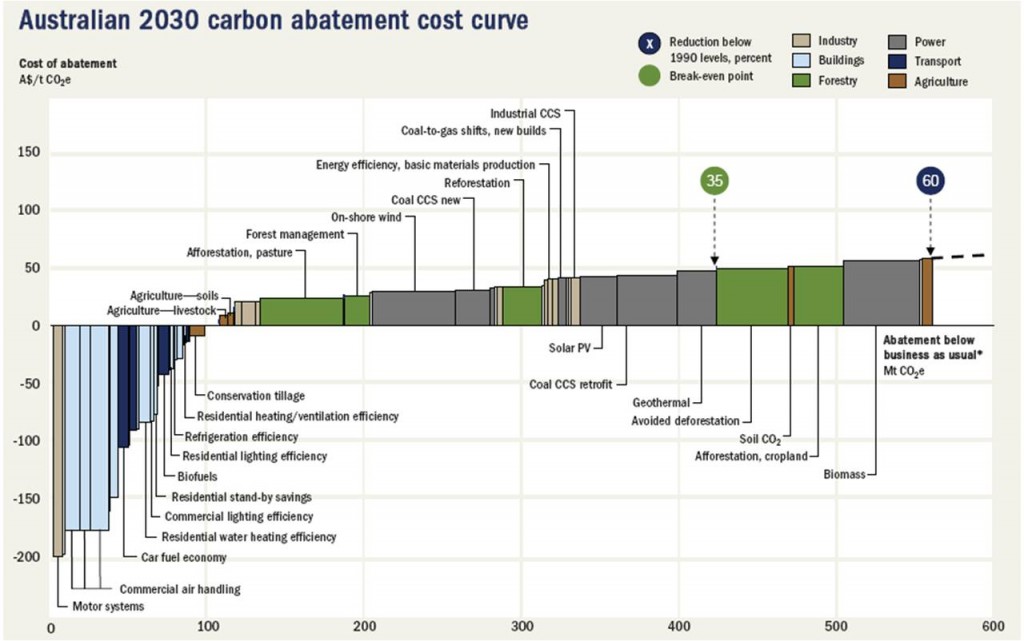
The price elasticity of household electricity demand is quite low, around -0.1, meaning that a 20% increase in price leads to a 2% reduction in demand. The addition of a carbon price into the cost of electricity is unlikely to have much impact on consumption unless carbon prices were to be very high. You might be wondering why are we doing this?
The point of a carbon price is not to lift energy prices so high that we turn down our consumption. The objective of a carbon price is to restructure the economy to lower emissions. Changes in household consumption of energy intensive goods may be a secondary and perhaps intended outcome but it is not the objective. It represents one source of potential abatement, but it would come at a relatively high abatement cost.
The emission reductions come from much lower abatement cost sources. The well-known McKinsey Curve showed some of these abatement activities, stacked in order of cost. When a carbon price is implemented, the abatement becomes viable. The “tax” we would be paying is the pass-through of some of these costs into the goods and services that we buy.

That being said, it’s important to preserve the price signals on emission intensive goods such as energy. That’s why the compensation package for households is not embedded as a subsidy in electricity prices; that would remove any incentive to reduce demand. Rather, it’s designed as a lump sum or income adjustment. So the incentive to reduce consumption (eg by installing solar panels, replacing end-of-life appliances with new energy efficient ones, improving insulation etc) is preserved.
This is not economic rocket science; when the US was designing their ETS, household assistance was also delivered as a fixed income benefit (as part of the fixed charges in utility bills) rather than impacting on the variable cost of energy … a different way of doing it but on the same economic logic.